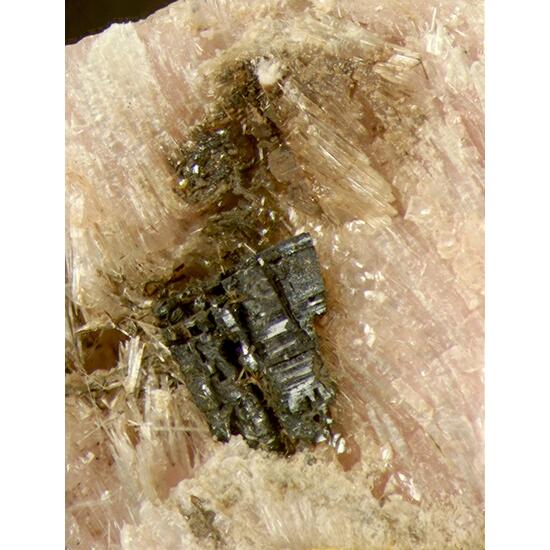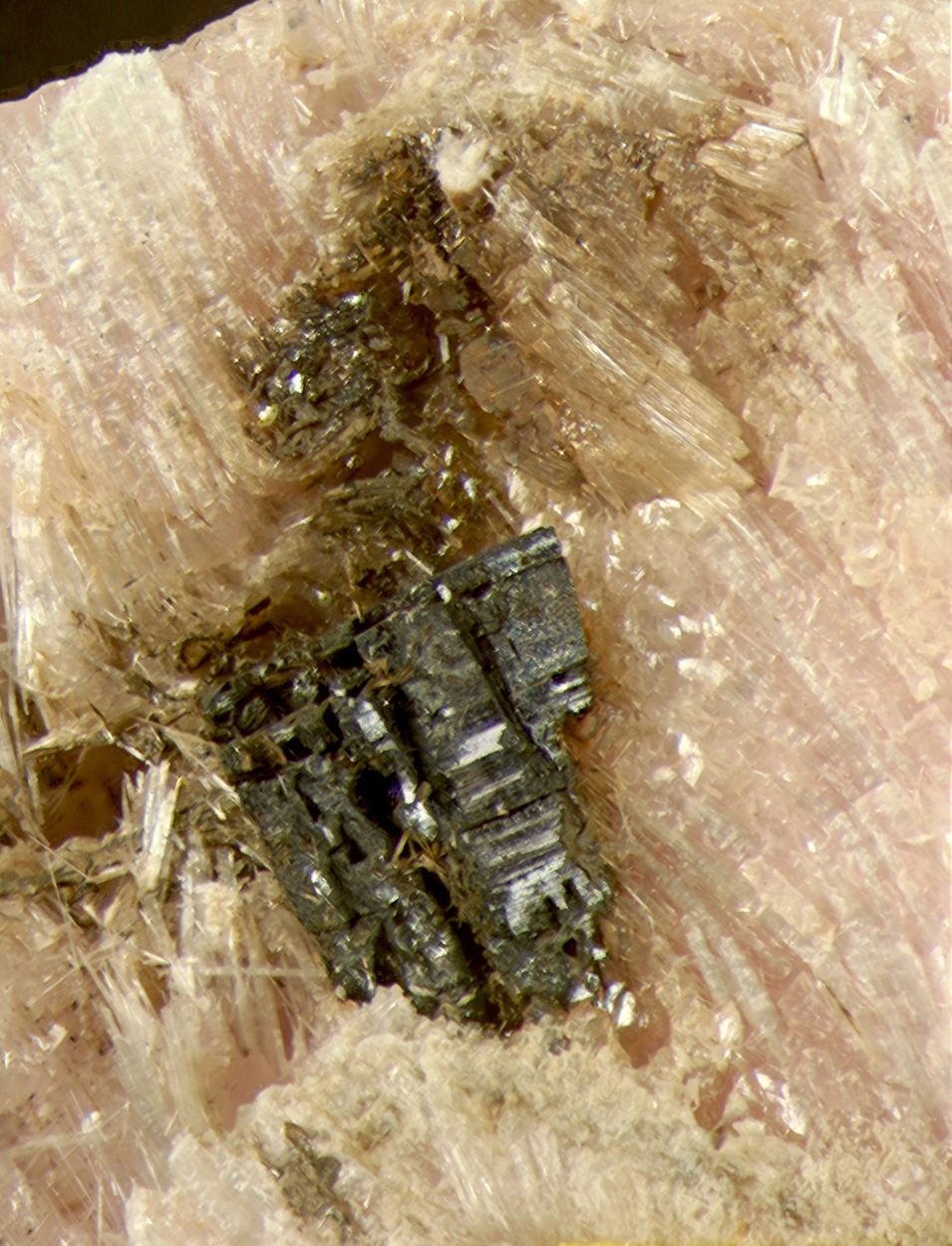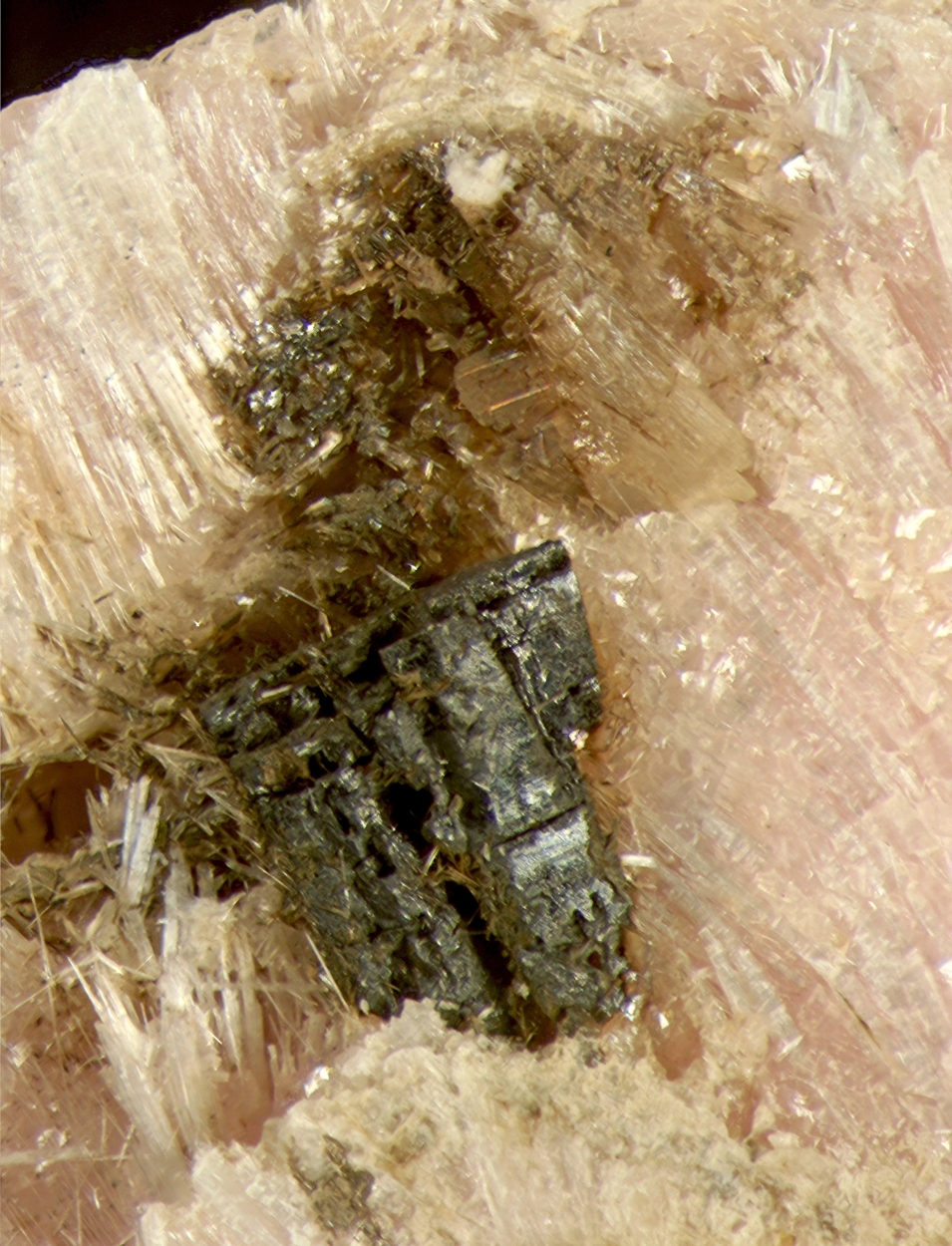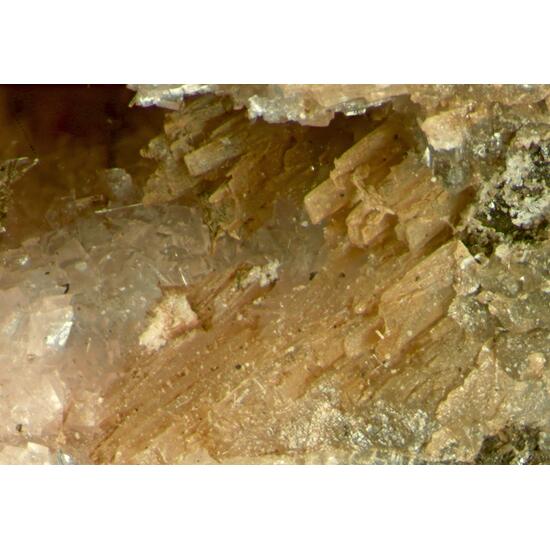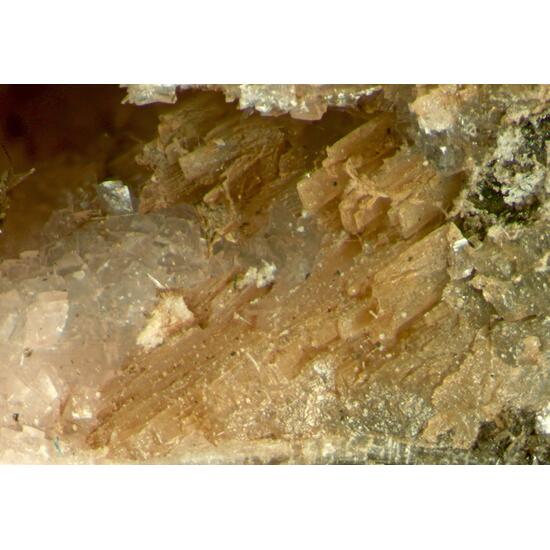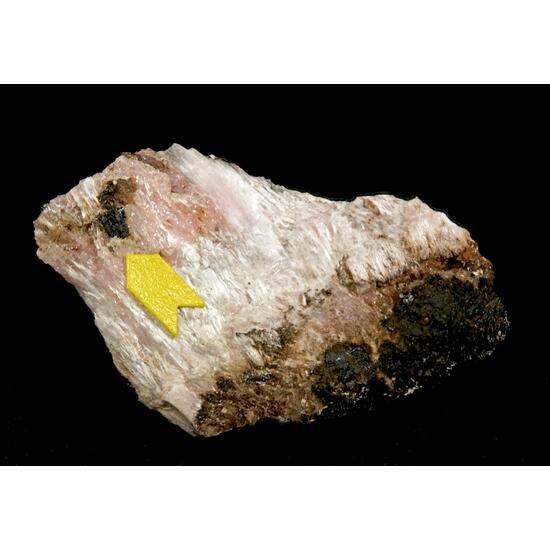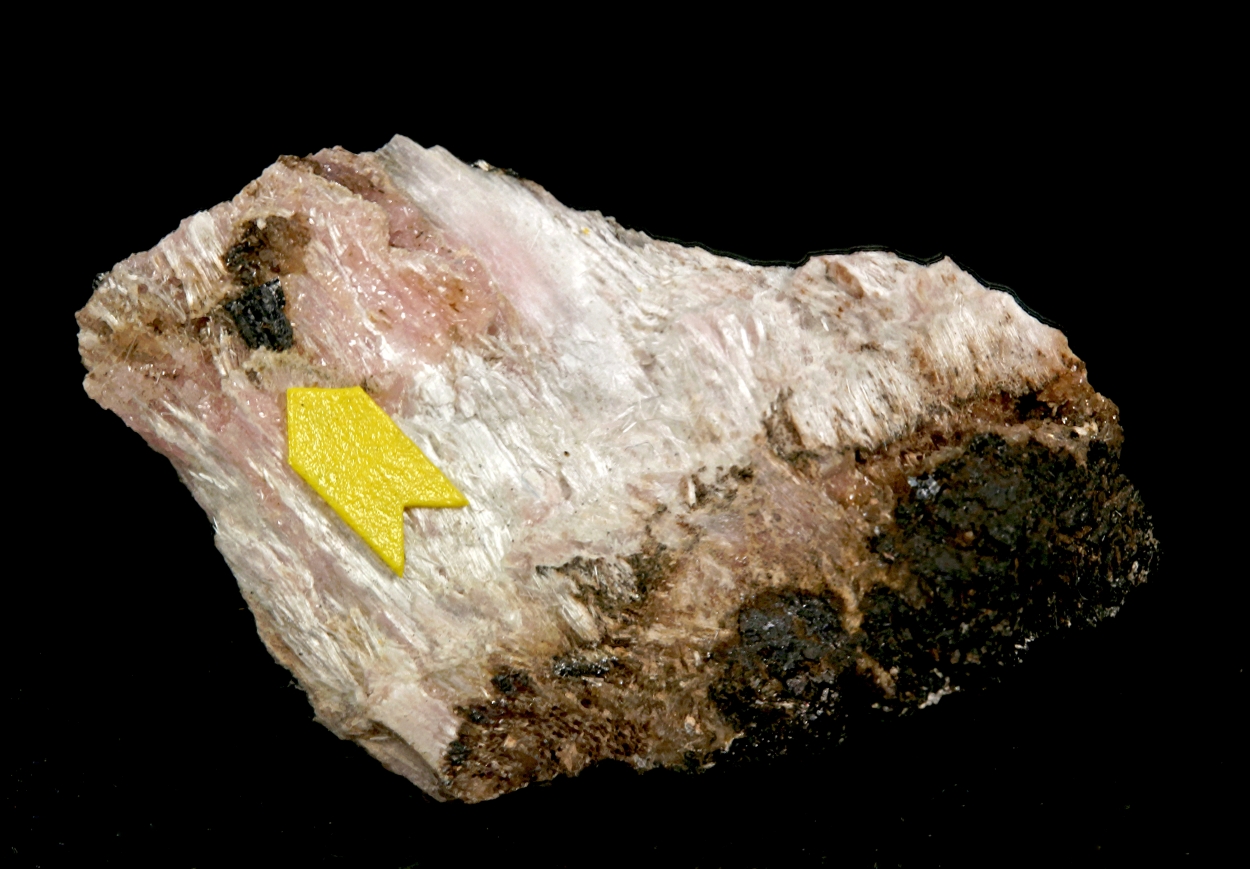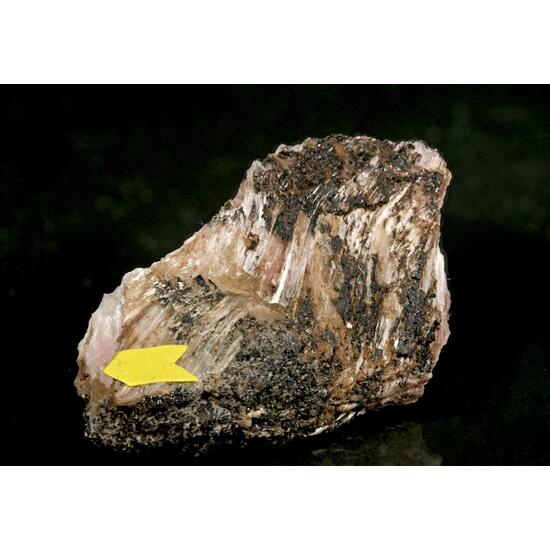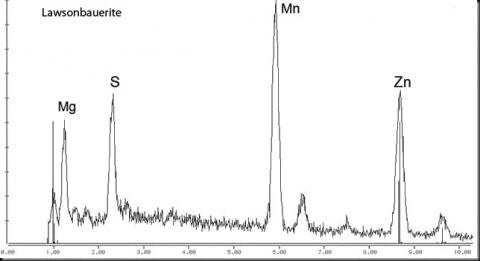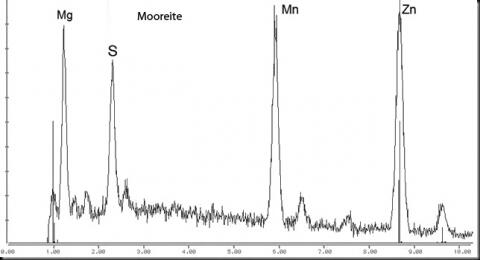The Sterling Mine is the type and only know locality for lawsonbauerite. It is a very rare mineral here.
This specimen features two groups of lath-like crystals similar to those shown on p. 636 of Pete Dunn’s “Franklin and Sterling Hill, New Jersey: the world’s most magnificent mineral deposits”. This habit is distinctly different from that of mooreite (a related mineral) – Dunn p. 638.
A sample from this find was also analyzed via qualitative EDS. (See the “Analysis” tab.)
Uncalibrated EDS is not, by itself, sufficient to prove that this is lawsonbauerite. However I have also provided a scan for a known mooreite sample (made with the same equipment at the same time). While peak heights in such scans can not be compared simplistically, it is clear that the lawsonbauerite is Mn dominant – as it should be. Together with the habit, this indicates lawsonbauerite rather than mooreite. (While torreyite, the Mg analogue of lawsonbauerite, can have a habit very similar to lawsonbauerite, one would expect a scan more like that of mooreite.)
The lawsonbauerite occurs in a matrix of layered sussexite, pyrochroite, and rhodochrosite. The layers are thin, and only a few have narrow cavities with freely growing crystals.
The first pair of photos (FOV 4.2 x 5.4 mm) shows an aggregate of well formed pyrochroite crystals about 1.9 mm high. The crystals are somewhat tapered and convoluted. They make me think of black weloganite. Next to the pyrochroite is a stack of tan, translucent, lawsonbaeurite laths about 1.4 mm tall. The white fibers and laths are sussexite. The pinkish stuff is (probably) rhodochrosite, some of it in the form of tiny rhombs.
The second pair of photos (FOV 3.3 x 2.3 mm) shows freely growing lawsonbauerite laths of typical habit to about 0.7 mm. The foreground consists of tightly packed laths, The pinkish rhombs on the left are probably rhodochrosite.
The specimen consists of inter-layered, lawsonbauerite, sussexite, pyrochroite and rhodochrosite. In the full-view photos, the white fibrous/platy stuff is sussexite. The black stuff is pyrochroite. There is no franklinite or hetaerolite on the specimen.
Single item (small box) shipping weight 2.3 oz. For shipments outside the USA, up to a total weight of 8 oz (225 g), this could be combined with other items from this or future auctions for the same postage. If you wish to keep an “open box”, let me know.
For shipments within the USA, there is a nominal increase of about $0.20 for each additional ounce. Above 13 oz I will use “own box” Priority Mail ($8.75).








